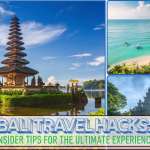Iceland, known as the “Land of Fire and Ice,” is a country of striking contrasts, where glaciers and volcanoes coexist in breathtaking harmony. Its dramatic landscapes, diverse wildlife, and rich cultural heritage make it a top destination for adventurers and those seeking peaceful escapes. Whether you’re eager to hike glaciers or relax amidst unique natural beauty, Iceland offers something for everyone. This guide to the top Icelandic adventure explores the best things to do in Iceland, from iconic landmarks to hidden gems, ensuring you make the most of your trip.
Iceland: A Land of Fire and Ice
Iceland’s unique geography is shaped by its volcanic activity and glaciers, creating a landscape like no other. The country is just below the Arctic Circle and boasts natural wonders such as active volcanoes, geysers, waterfalls, and black sand beaches. Its rugged terrain makes it an ideal destination for adventure seekers, while its serene landscapes offer tranquility for those seeking peace. Iceland’s culture mirrors its geography, with a deep connection to nature, folklore, and Viking heritage. The country beautifully balances modernity and tradition, where innovation thrives alongside the wild beauty of the outdoors.
The Golden Circle
One of the best ways to explore Iceland is by following the famous Golden Circle route, a loop that takes visitors to some of the country’s most iconic and breathtaking sites.
1. Thingvellir National Park
The Golden Circle begins with Thingvellir National Park, a UNESCO World Heritage site and one of the most geologically significant locations in the world. This park sits at the meeting point of the North American and Eurasian tectonic plates, forming a dramatic rift valley. The park is historically important as the site of Iceland’s first parliament, founded in 930 AD. Here, you can walk between two continents while enjoying stunning views of the mountains, rivers, and lakes. Beyond its geological and historical importance, Thingvellir offers an ideal setting for hiking, photography, and immersing yourself in the stunning landscapes of Iceland.
2. Geysir Geothermal Area
Next, head to the Geysir Geothermal Area, home to the renowned Strokkur geyser. This impressive geyser erupts every few minutes, shooting boiling water up to 30 meters into the air. The surrounding landscape is a colorful mix of geothermal springs, bubbling mud pots, and fumaroles, creating a unique and otherworldly environment.
The geothermal area’s vibrant colors and dramatic eruptions make it a must-see for visitors, and the opportunity to witness the raw power of the Earth is an unforgettable experience.
3. Gullfoss Waterfall
Every trip to the Golden Circle is complete with stopping by Gullfoss, one of Iceland’s most iconic waterfalls. The mighty cascade of water drops 32 meters into a deep canyon, creating an awe-inspiring sight. The surrounding cliffs and misty spray add grandeur, making it a perfect spot for photography and reflection. On a sunny day, you might even glimpse a rainbow in the mist, adding a magical touch to this breathtaking landscape.
Exploring the South Coast
Iceland’s South Coast is another area filled with dramatic natural wonders, from stunning waterfalls to black sand beaches. This region offers some of the country’s most iconic views.
4. Seljalandsfoss and Skógafoss Waterfalls
Start your journey along the South Coast with Seljalandsfoss and Skógafoss, two of Iceland’s most famous waterfalls. Seljalandsfoss is unique because visitors can walk behind the waterfall, offering a different perspective of the cascading water. The surrounding landscape of lush green fields and distant mountains adds to the magic of this location.
Just a short drive away is Skógafoss, a massive waterfall that plunges 60 meters into a wide river below. The sheer size and power of the waterfall are awe-inspiring, and on sunny days, you may even spot a rainbow in the mist. For the more adventurous, a steep staircase leads to the top, where you can get a panoramic view of the surrounding area.
5. Reynisfjara Black Sand Beach
One of Iceland’s most unique landscapes is Reynisfjara, a black sand beach near Vík. The contrast of the jet-black sand with the crashing white waves creates a dramatic scene, while the basalt columns and sea stacks rising from the ocean add to the beach’s otherworldly beauty. The beach is also home to puffins during summer, making it an excellent spot for birdwatching. But be cautious—the waves here can be treacherous, so stay safe from the water.
6. Jökulsárlón Glacier Lagoon
As you continue east, visit Jökulsárlón Glacier Lagoon, one of Iceland’s most famous and photogenic locations. Icebergs from the nearby Vatnajökull glacier fill the lagoon, floating serenely in the water. Seeing these massive ice chunks drifting by, often reflecting the sky, is truly mesmerizing.
If you’re lucky, you might spot seals lounging on the icebergs or swimming in the lagoon. For an added adventure, consider taking a boat tour, which will bring you closer to the icebergs and offer a unique perspective on this incredible landscape.
7. Diamond Beach
Located just across the road from Jökulsárlón, Diamond Beach is a black sand beach where chunks of icebergs wash ashore, creating a surreal scene. The ice glistens in the sunlight, resembling diamonds on the dark sand, and the surrounding ocean adds to the ethereal beauty of the location. It is one of the most photogenic spots in Iceland and a must-visit for photographers and nature lovers.
Beyond the Golden Circle and South Coast
Several lesser-known destinations in Iceland are worth the trip for those who want to venture off the beaten path and explore more remote regions.
8. Snæfellsnes Peninsula
People often call the Snæfellsnes Peninsula in the west “Iceland in Miniature” because it showcases the country’s diverse landscapes all in one area. At the heart of the peninsula is Snæfellsjökull, a glacier-capped volcano that inspired Jules Verne’s novel Journey to the Center of the Earth. Adventurers can hike up the glacier or explore the ice caves beneath it.
The peninsula boasts picturesque fishing villages, striking black sand beaches, and the famous Kirkjufell Mountain, renowned for its distinctive pyramid shape that frequently appears in photographs. Whether hiking, sightseeing, or just soaking in the tranquil beauty, the Snæfellsnes Peninsula has incredible natural diversity.
9. Lake Mývatn
Lake Mývatn is known for its geothermal activity and stunning volcanic landscapes north of Iceland. The area is filled with bubbling mud pools, steam vents, and volcanic craters, creating an otherworldly atmosphere. Mývatn is also famous for its rich birdlife, particularly ducks and swans, making it a fantastic destination for birdwatching enthusiasts.
A standout feature of the area is the Mývatn Nature Baths. During this geothermal retreat, guests can unwind in soothing, mineral-laden waters while enjoying the dramatic volcanic landscape.
10. Westfjords
For a truly off-the-beaten-path experience, head to the Westfjords, a remote and rugged region with dramatic fjords and breathtaking coastal scenery. The sparsely populated area makes it ideal for escaping the crowds and enjoying solitude. You’ll find charming fishing villages, pristine beaches, and an abundance of wildlife, including opportunities for whale watching and birdwatching.
11. Eastfjords
The Eastfjords offer a peaceful, picturesque region with stunning coastal drives, quaint towns, and the chance to spot wild reindeer. This area is perfect for those seeking a quieter, more relaxed experience away from the more tourist-heavy regions of Iceland.
Additional Tips for Your Iceland Adventure
- Best Time to Visit: Iceland is a year-round destination, offering distinct experiences in every season. Summer brings long daylight hours, perfect for outdoor activities like hiking and sightseeing. The weather is milder during this time, and many popular tourist attractions are more accessible. Winter offers a magical experience with the chance to see the Northern Lights in the dark, clear skies. It’s also an ideal time for winter activities, such as snowmobiling and exploring ice caves, making it an excellent choice for adventure lovers.
- Packing Tips: Iceland’s weather is highly unpredictable, so preparing for various conditions when packing is crucial. Bring warm clothing, including layers that can be added or removed, and waterproof layers to protect you from rain and wind. Durable, waterproof footwear is essential, particularly if you’re venturing on hikes or navigating damp or frozen landscapes. In winter, thermal clothing, such as base layers and insulated outerwear, will keep you warm in freezing temperatures. If you spend time outdoors in extreme conditions, consider renting extra gear, such as thermal boots and gloves, for added comfort.
- Transportation: Renting a car is ideal for discovering Iceland’s remote beauty at your own pace. It offers the flexibility to visit off-the-beaten-path locations and follow your itinerary, especially if you’re traveling outside popular tourist areas. However, if you prefer to avoid driving, numerous guided tours provide expert knowledge of Iceland’s history, culture, and natural wonders. Remember that road conditions can vary, especially in winter, so be prepared to rent a vehicle suitable for all conditions. Public transportation is limited in some areas so that car renting can be the most convenient option.
- Accommodation: Iceland offers many accommodations to suit all budgets and preferences. From cozy guesthouses and homestays for a more intimate, local experience to luxury hotels offering modern amenities and stunning views, there is something for everyone. For those on a tighter budget, camping is a popular and immersive option, especially in the summer when the weather is milder. There are also eco-friendly accommodations, such as sustainably built cabins or lodges, perfect for nature lovers. Book in advance if you plan to stay in more remote locations, as accommodations can fill up quickly.
- Food: Icelandic cuisine is hearty, flavorful, and influenced by the country’s natural resources, especially its fresh seafood and lamb. Traditional dishes include fish stews, lamb soups, and skyr (a yogurt-like dairy product). Street food is also popular, with hot dog stands serving the iconic Icelandic hot dog, often topped with crispy onions, mustard, and remoulade. Take the chance to try traditional pastries at local bakeries, like cinnamon rolls and rye bread. For an authentic experience, sample Icelandic delicacies such as fermented shark or enjoy fresh seafood at one of the many coastal restaurants.
Experience the Top Icelandic Adventure That Will Stay with You Forever
As you set out on your Icelandic adventure, take the time to embrace the magic of this extraordinary land fully. The contrasts of fire and ice, light and darkness, tradition and modernity make Iceland a place. Whether hiking to waterfalls, exploring glaciers, relaxing in geothermal pools, or gazing at the Northern Lights, Iceland’s beauty will surely leave you amazed. Remember to remain flexible and open to spontaneous moments, as the best experiences often come from unplanned encounters or hidden gems. Iceland is not just a destination—it’s an unforgettable journey that will stay with you long after you return home.
Make your journey premium with Ita-Airways
ITA Airways, the flag carrier of Italy, operates as a modern and innovative airline offering domestic and international flights. Committed to delivering exceptional service, sustainability, and connectivity. The airline’s fleet comprises state-of-the-art aircraft designed for efficiency and passenger comfort, with routes connecting major cities across Europe, North America, Asia, and beyond. Its website, ita-airways.com, serves as a comprehensive platform for booking flights, managing reservations, and accessing exclusive deals.




